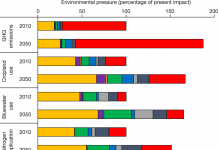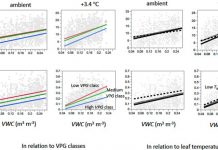【Research Highlights】Greenhouse gas finds a use. Nature 2012 492 156 doi:10.1038-492156be.
A potent greenhouse gas that is a by-product of refrigerant production can be used to add a fluorine-based group to molecules — a desirable reaction in the manufacture of drugs and agrochemicals.
G. K. Surya Prakash and his colleagues at the University of Southern California in Los Angeles report that the gas — which has the formula CF3H and is known as fluoroform or HFC-23 — can be reacted with other molecules resulting in the addition of CF3 to carbon silicon boron or sulphur atoms. The reaction occurs under simple conditions and provides a rare use for a chemical with a global-warming potential 11700 times greater than that of carbon dioxide. Science 338 1324–1327 (2012)
Zhaoliang Song Hailong Wang P. James Strong Zimin Li Peikun Jiang. Plant impact on the coupled terrestrial biogeochemical cycles of silicon and carbon: Implications for biogeochemical carbon sequestration. Earth-Science Reviews 2012 115(4): 319–331
Abstract
The coupled terrestrial biogeochemical cycles of silicon (Si) and carbon (C) that are driven by plant action play a crucial role in the regulation of atmospheric CO2. Generally the processes involved in the coupled cycles of Si and C include plant-enhanced silicate weathering phytolith formation and solubilization secondary aluminosilicate accumulation phytolith occlusion of C as well as physico-chemical protection of organic C in soils. There is increasing evidence of biological pumping of Si in terrestrial ecosystems suggesting that complex feedbacks exist amongst the processes within the coupled Si and C cycles. Recent advances in the coupled Si and C cycles offer promising new possibilities for enhancing atmospheric CO2 sequestration. Organic mulching rock powder amendment cultivating Si-accumulating plants and partial plant harvesting are potential measures that may allow for long-term manipulation and biogeochemical sequestration of atmospheric CO2 in soil–plant systems.







